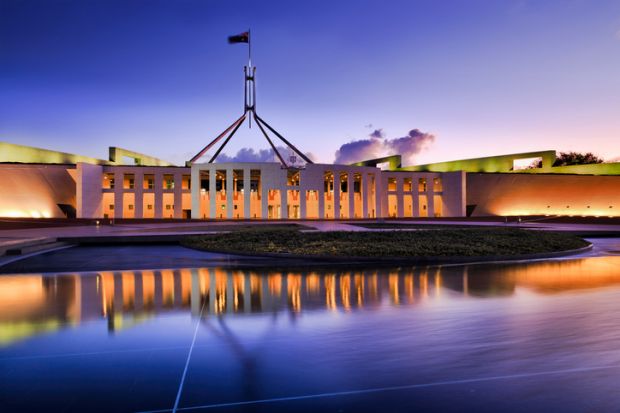Australia’s higher education sector has been underwhelmed by a “business as usual” federal budget that ploughs money into vocational training but offers little to universities.
From a tertiary education perspective, the headline item in the 2019-20 budget was a A$525 million (£285 million) injection into Australia’s long-neglected vocational education sector, with administrative arrangements to be overhauled and up to 80,000 extra apprenticeships funded.
The package is the government’s response to a review of vocational education and training by former New Zealand skills minister Steven Joyce, whose report was released as part of the budget.
It includes funding for a commission to drive long-term skills reform and a careers institute to improve advice for students and jobseekers, alongside other measures.
Universities, by comparison, have attracted precious little new funding. The major items – A$94 million to support “Destination Australia” scholarships to lure international students away from the major cities, and A$72 million to forgive the student debt of teaching graduates who work in the outback – were both announced previously.
Universities also anticipated administrative improvements that will see higher education students granted unique identification numbers and records of their qualifications deposited in a “centralised digital tertiary learning repository”, costing the government about A$18 million.
In a sop to the sector, the government spared it a A$3.5 million impost by delaying an unpopular measure to levy universities for the cost of administering student loans.
The Group of Eight said the budget commitment to spend a further A$3.8 billion on health research, confirming anticipated allocations from the Medical Research Future Fund, was welcome news.
But Go8 chair Dawn Freshwater said the lack of substantial new support for universities was of concern – even though a coming federal election, expected to be called within days, could prevent the government’s spending programme from ever being implemented.
“It’s the signal it sends around the value of the sector, and what we bring to society,” Professor Freshwater told Times Higher Education. “It’s a missed opportunity for recognising the importance of a strong research ethos and the impact that has on prosperity, welfare and the economy.”
Universities Australia chief executive Catriona Jackson said the government had missed a “prime opportunity” to reverse A$2.4 billion in cuts announced over the past 16 months, instead deciding to invest the money in tax cuts and a budget surplus.
“These cuts are the wrong decision for Australia’s future,” she said. “They will deny Australians access to university and to life-changing research breakthroughs.”
The Regional Universities Network welcomed the budget’s rurally focused measures, including extra work rights for foreigners who study outside the major cities, but said the government should uncap university places in non-metropolitan areas.
Science groups welcomed a A$10 million allocation to the Melbourne-based Lowitja Institute, which researches Aboriginal and Torres Strait Islander health issues, and a A$3 million initiative to encourage and retain women in science, technology, engineering and mathematics fields.
But the Academy of Science said the government had collectively cut A$72 million from the National Collaborative Research Infrastructure Scheme, the Australian Research Council, learned academies and programmes to support entrepreneurs and industry growth.
The government also signalled a renewed intention to close the dormant Education Investment Fund and redirect its A$3.9 billion into a new fund for flood and fire victims.
“Stripping funds from education to support emergency responses is a false economy,” said Science & Technology Australia president Emma Johnston.




